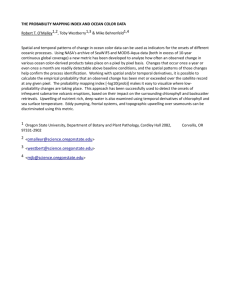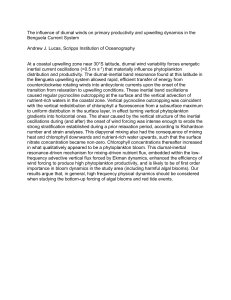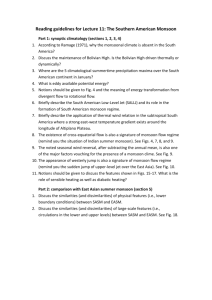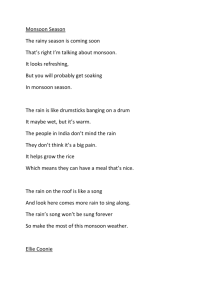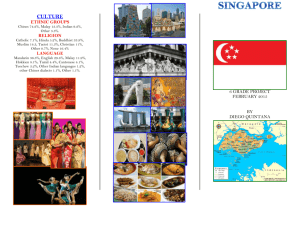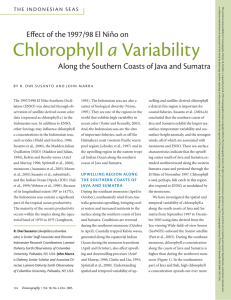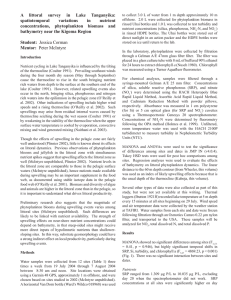CHAPTER 3 - PORSEC 2010
advertisement
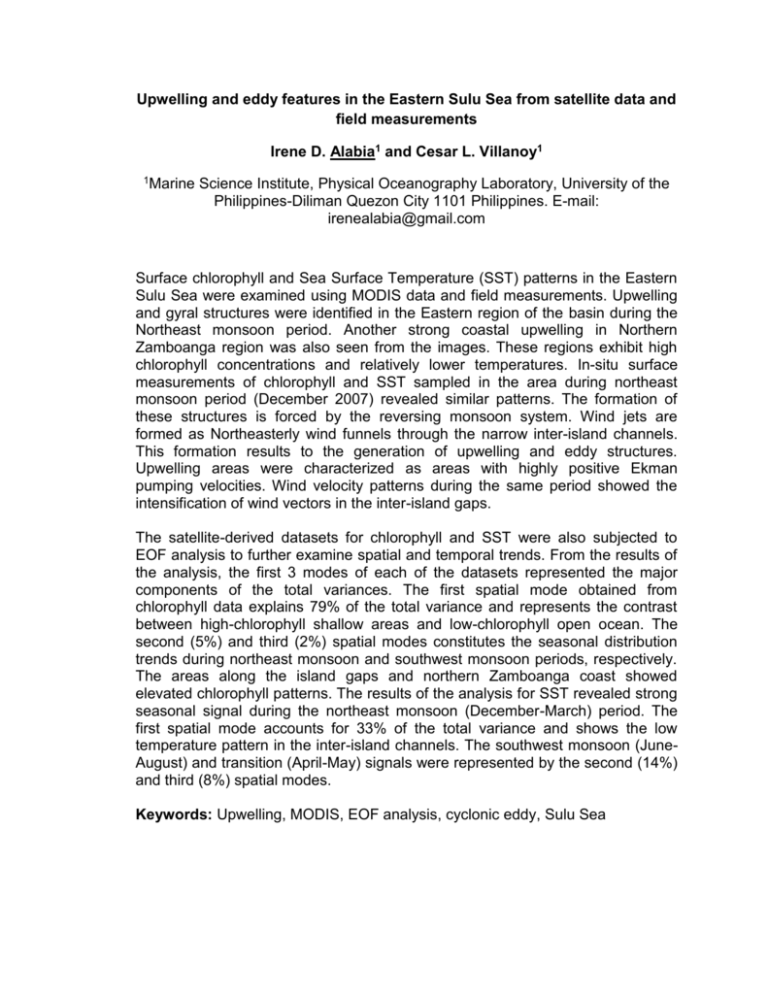
Upwelling and eddy features in the Eastern Sulu Sea from satellite data and field measurements Irene D. Alabia1 and Cesar L. Villanoy1 1Marine Science Institute, Physical Oceanography Laboratory, University of the Philippines-Diliman Quezon City 1101 Philippines. E-mail: irenealabia@gmail.com Surface chlorophyll and Sea Surface Temperature (SST) patterns in the Eastern Sulu Sea were examined using MODIS data and field measurements. Upwelling and gyral structures were identified in the Eastern region of the basin during the Northeast monsoon period. Another strong coastal upwelling in Northern Zamboanga region was also seen from the images. These regions exhibit high chlorophyll concentrations and relatively lower temperatures. In-situ surface measurements of chlorophyll and SST sampled in the area during northeast monsoon period (December 2007) revealed similar patterns. The formation of these structures is forced by the reversing monsoon system. Wind jets are formed as Northeasterly wind funnels through the narrow inter-island channels. This formation results to the generation of upwelling and eddy structures. Upwelling areas were characterized as areas with highly positive Ekman pumping velocities. Wind velocity patterns during the same period showed the intensification of wind vectors in the inter-island gaps. The satellite-derived datasets for chlorophyll and SST were also subjected to EOF analysis to further examine spatial and temporal trends. From the results of the analysis, the first 3 modes of each of the datasets represented the major components of the total variances. The first spatial mode obtained from chlorophyll data explains 79% of the total variance and represents the contrast between high-chlorophyll shallow areas and low-chlorophyll open ocean. The second (5%) and third (2%) spatial modes constitutes the seasonal distribution trends during northeast monsoon and southwest monsoon periods, respectively. The areas along the island gaps and northern Zamboanga coast showed elevated chlorophyll patterns. The results of the analysis for SST revealed strong seasonal signal during the northeast monsoon (December-March) period. The first spatial mode accounts for 33% of the total variance and shows the low temperature pattern in the inter-island channels. The southwest monsoon (JuneAugust) and transition (April-May) signals were represented by the second (14%) and third (8%) spatial modes. Keywords: Upwelling, MODIS, EOF analysis, cyclonic eddy, Sulu Sea

